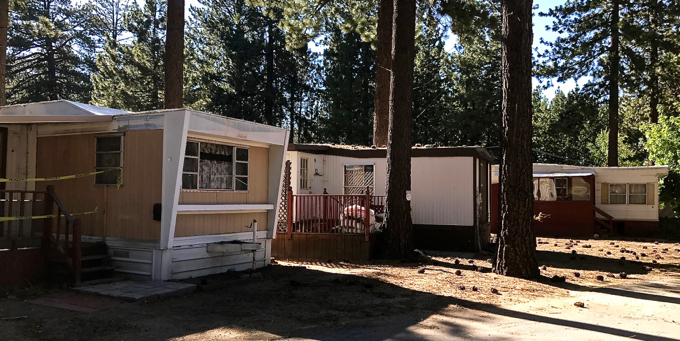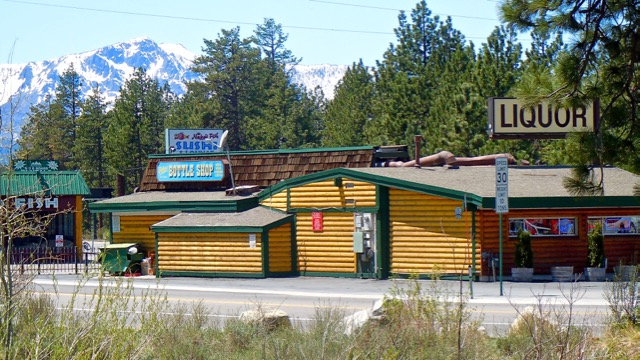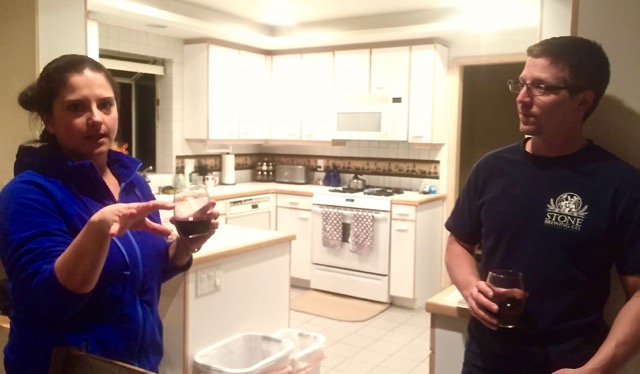Affordable housing runs gamut in Tahoe-Truckee
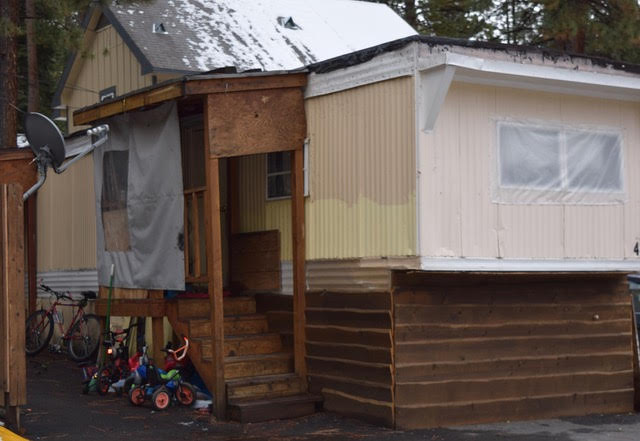
Housing, while it may be affordable, isn’t always ideal. Photo/Heidi Hill Drum
Publisher’s note: This is one in a series of stories about affordable housing in the Lake Tahoe-Truckee region. All articles may be accessed via the home page under Special Projects, 2017 Affordable Housing.
By Linda Fine Conaboy
Few things are more important than a roof over our heads—preferably one that doesn’t leak.
But as the price of housing, especially affordable workforce housing, continues to escalate within the Tahoe basin and Truckee, many are finding it more and more difficult to obtain a suitable place to live. According to research, this problem is having an affect not only locally, but also nationwide, especially for those on the lower end of the income scale.
In an attempt to make sense of the local housing scene, Lake Tahoe News talked to local area experts to try to quantify the extent of the situation, which continues to spiral out of control. Communities around Lake Tahoe and the town of Truckee are all feeling the economic pinch that a lack of accessible housing brings.
Workers find themselves burdened not only by not having places to live near their jobs, but also, because many must commute miles and miles just to get to work, they must dig deeper to afford the high price of transportation costs.
As an example, one family consisting of mom and dad who work in Truckee, and three kids who attend Truckee schools, now commutes every day to work and to school from Reno, where they were lucky enough to find a home to suit their paychecks.
Their story is not atypical—many individuals and families around the lake are struggling, some even to a much greater degree.
Affordable housing. Workforce housing. Low-income housing. Section 8, below market rate, deed restricted and extremely low-income are a few of the names used to indicate various income groupings.
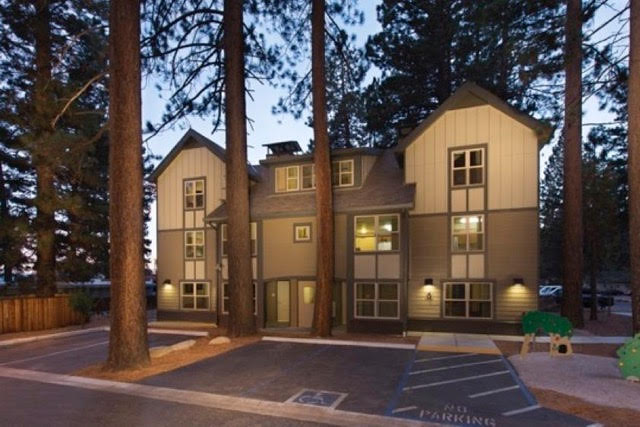
An example of an affordable housing project in Kings Beach. Photo/DOMUS Development
What do these classifications mean? A brief summary is in order before we can even begin to take a look at what housing is available within the assorted categories.
· Affordable housing: Under federal statutes, housing is considered affordable when it requires the dedication of no more than 30 percent of gross household income, including rent or mortgage payments, utilities, taxes and insurance, homeowner’s association fees and other related costs.
· Area median income: The median household income for an area. Usually household size is considered when designating this term.
· Below market rate housing: Refers to properties that are leased or sold at prices that are below the current market value.
· Deed restriction: A requirement recorded at the sale of the property that ties the current or future owners to the specific use of the property.
· Extremely low-income: This grouping includes those with annual incomes that are equal to 30 percent or less of the area median income of an area.
· Workforce housing: Targeted to be accessible to households that include members of the local workforce. However, the income levels targeted for workforce housing are often limited to those who do not otherwise qualify for subsidized rental or for-sale housing, but who may still have a hard time affording market-rate housing.
· Subsidized housing: Housing that utilizes some sort of rental assistance. For example, housing where all or a portion of the monthly housing costs are paid directly by the government. A good example of this is Section 8 housing where a renter pays only a portion of the rent determined by the household’s income.
An article from the website, Realtor.com, written by Lisa Johnson Mandell, stated that unfortunately, being eligible for affordable housing doesn’t mean you will actually get the help you need. Under current funding levels, affordable housing programs can assist only approximately 4.8 million low-income families—that’s about 1 in 4 eligible households, and the waiting lists in some communities are extremely long. Cities such as Los Angeles have an estimated waiting list of more than 10 years.
Research also shows that the situation around Lake Tahoe is not as extreme; however, there are waiting lists in some locales as long as four years.
It is important to note that 1) there is a housing crisis at Lake Tahoe and Truckee, and 2) this is not a new crisis. However, it is also important to note that this near-catastrophe has come to the fore and is being addressed by civic and community leaders.
For example, Heidi Hill Drum, the CEO of Tahoe Prosperity Center, said, “It is difficult to build affordable housing in the Lake Tahoe region because the projects often don’t pencil for a developer. Most affordable housing projects that have been completed were done when the state of California had redevelopment funds. Those funds are no longer available and local government jurisdictions do not have many options to bridge that gap.”
DeDe Cordell, Placer County’s director of public affairs and communications, concurred with Drum, also noting the demise of California’s redevelopment agencies.
A document highlighting the history of RDAs in California says the death of this government-based entity will surely reduce the number of new affordable housing developments in the foreseeable future.
This forecast is now coming to fruition, and as the document says, no approved measures currently allow for an equivalent statewide set-aside fund exclusively for providing future affordable housing after all existing obligations are met by other agencies.
Affordable housing is a high priority for Placer County, Cordell told Lake Tahoe News. “We are looking at a lot of different possibilities to determine the best approaches to tackling this challenge. It’s a challenge countywide (Placer County encompasses not only Auburn, but also Tahoe City, Kings Beach and Tahoe Vista), but it’s especially challenging at Tahoe because it’s such a tourism/service-based economy, and with so many people opting to use their homes as short-term vacation rentals, it’s significantly reduced the available housing stock, making the problem that much worse. We are even considering ways to encourage/incentivize owners to rent their properties seasonally or long-term to create additional housing stock that can be affordable to people in a variety of income levels.”
A report (The Regional Housing Study) from the Tahoe Truckee Community Foundation backs up Cordell’s statements. In fact, the report says, 65 percent of the homes at Tahoe and Truckee sit vacant most of the year because they are vacation houses. Consequently, in order to stay close to their workplace, locals spend a huge chunk of their incomes on housing, some of it without adequate space or heating.
And from Drum, “There are some federal programs that help subsidize building affordable housing projects, but without local government funding, they often aren’t enough. And given how expensive land is at Lake Tahoe, it makes it even more challenging here. Add to that the additional regulations we have due to our environmental protections, Tahoe is a challenging place to build any housing in the affordable and mid-ranges.”
TTCF’s Regional Housing Study’s further examination of housing within the Tahoe basin, including Truckee, reports that the region’s median housing price far exceeds the prices considered affordable for the area’s median incomes, pricing a significant portion of the workforce out of the housing market.
To make matters worse, Drum said, there is little affordable housing in the pipeline or in the planning stages in any location around the lake. “But that doesn’t mean there’s no effort in getting that pipeline full,” she told Lake Tahoe News, referencing another task force spearheaded by Sue Novasel, county supervisor for district 5 in El Dorado County.
“One of the things that’s come out [talks about affordable housing] is that every jurisdiction has specific problems and needs and that trying to embrace the entire lake is difficult. We decided we need to get specific about the South Shore,” Novasel told LTN.
Additionally, with a consultant’s help, the group decided to work with Tahoe Prosperity on a pilot project. Novasel said, “Tahoe Prosperity will take the lead to develop a pilot project to redevelop an area, maybe a motel for low income people. We need to develop a tool box and we hope to get some of the fees lowered. The need is immediate. Private business needs to be a part of this.
“If we as a group can come up with a blueprint; if we can put a dent in this by getting people working together, we can at least start on the problem.”
As to the question of how many more units are needed throughout the basin to meet demand, Placer County’s Cordell said there is no simple answer to this conundrum. “Our county is in the process of preparing the Economic and Housing Needs Analysis for Placer County,” she said. “This is anticipated to be completed by the end of the year and will provide us a better understanding of what the needs are in the area.”
Following is a fairly comprehensive list of the housing available now for moderate to low-income families and individuals. Although there may be other existing data, that information was not readily available to Lake Tahoe News at press time. The information was gleaned from the May 2014 Tahoe Regional Housing Needs Report compiled by BAE Urban Economics and, also assembled by BAE, from the North Tahoe Regional Workforce Housing Needs Assessment as well as from conversations with representatives from Tahoe Regional Planning Agency, Placer County, Douglas County, El Dorado County and South Lake Tahoe.
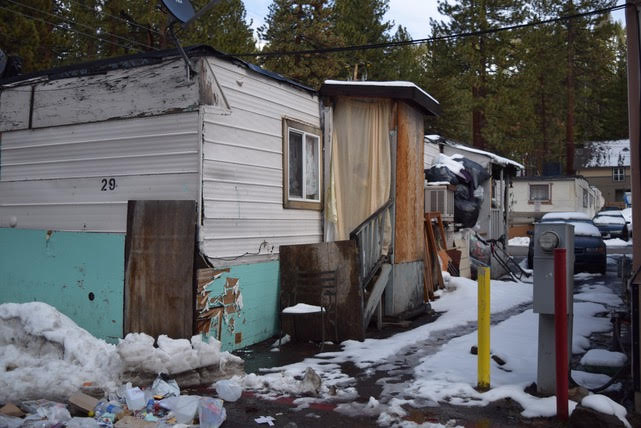
Landlords in the Tahoe-Truckee area don’t always care about providing quality housing. Photo/Heidi Hill Drum
Complex name:
California side
· Bijou Woods Apartments/South Lake Tahoe/92 units low or very low income
· Evergreen Apartments/South Lake Tahoe/26 units low or very low income
· Kelly Ridge Apartments/South Lake Tahoe/30 units very low income/2 units 62 or older
· Sierra Garden Apartments/South Lake Tahoe/76 units low or very low income
· Sky Forest Acres/South Lake Tahoe/17 units very low income/1 unit for disabled
· Tahoe Pines Apartments/South Lake Tahoe/26 units low or very low income
· Tahoe Senior Plaza/South Lake Tahoe/45 units very low income
· Tahoe Valle Townhomes/South Lake Tahoe/70 units low or very low income
· The Aspens/South Lake Tahoe/56 units
Nevada side
· Lake Vista 1/Stateline/24 units low or very low income
· Lake Vista 11/Stateline/40 units low or very low income
· Meadowbrook Apartments/Stateline/30 units low or very low income
· Aspen Grove Apartments/Stateline/39 units low or very low income
North Lake Tahoe area
· Kings Beach Housing Now/Kings Beach/77 units low or very low income
· Corda/Tahoe City/1 unit
Truckee area
· Frishman Hollow/Truckee/32 units very low income
· Henness Flats/Truckee/92 units low or very low income
· River View Homes/Truckee/38 low or very low income homes
· Sawmill Heights/12 low income (this is a mixed-income property containing 96 units, 12 of which are low income)
· Sierra Village/59 low or very low income
· Truckee Donner Senior/60 low or very low income
· Truckee Pines/104 low or very low income
· Martis Valley/4 units.
Douglas County Community Development Director Mimi Moss advised that Douglas County’s 2011 Housing Element suggests that to meet historic population growth over the next 20 years, there will need to be 1,258 additional new low or very low income housing units, and an additional 700 new rental spaces. These figures represent the need for the entire county and not just the areas within the Tahoe basin.
In Placer County, Cordell reported several new housing projects are in the development stage, although no specific build-out data is now available.
As for easing some of the obstacles faced by potential developers, Tom Lotshaw, the public information officer for TRPA said, “Affordable, multi-family housing projects (serving people with 80 percent or less of county median income) are exempt from the need for the normal residential building allocations.
“Hundreds of bonus units are available for these types of projects at no cost from TRPA based on project need. Unfortunately, while these bonus units are readily available, we have not seen them requested or used much at Lake Tahoe.”
He added that the 2012 Regional Plan included a number of land-use planning incentives including height, density, coverage and provisions for mixed-use development for affordable multi-family housing units in town centers, in close proximity to the places where people work, shop and go to school.
As discussed earlier, the Lake Tahoe Basin is not unique in its need for housing that will meet the requirements of all of its citizens and employees. However, there are statistics compiled by the Tahoe Prosperity Center that indicate the area may have some additional hurdles to jump before the housing basics of everyone can be met. Consider these statistics:
· Tahoe has higher than average unemployment and poverty rates
· More than 60 percent of the children are on subsidized meal programs at their schools
· Only 18 percent of residents can afford the median-priced home at Lake Tahoe
· Lake Tahoe includes two states, six local governments and 198 plan areas making economic progress challenging.
Despite the challenges, there may now be enough people willing to confront the barriers and see that the forward momentum stays in place.
“As in many other parts of the country, a major shortage of affordable housing is a critical issue for the Tahoe region, and one that many partners must work together to address. It’s an issue for families and their finances; it’s an issue for community health and vitality; and it’s an issue for the environment, with many people forced to commute long distances to or from work at Tahoe,” Lotshaw told Lake Tahoe News.
 The parcels have been on the market at different times in the last few years. Part of the difficulty in selling them is that there are no development rights associated with the lots. One escrow fell through and other offers have not been accepted.
The parcels have been on the market at different times in the last few years. Part of the difficulty in selling them is that there are no development rights associated with the lots. One escrow fell through and other offers have not been accepted.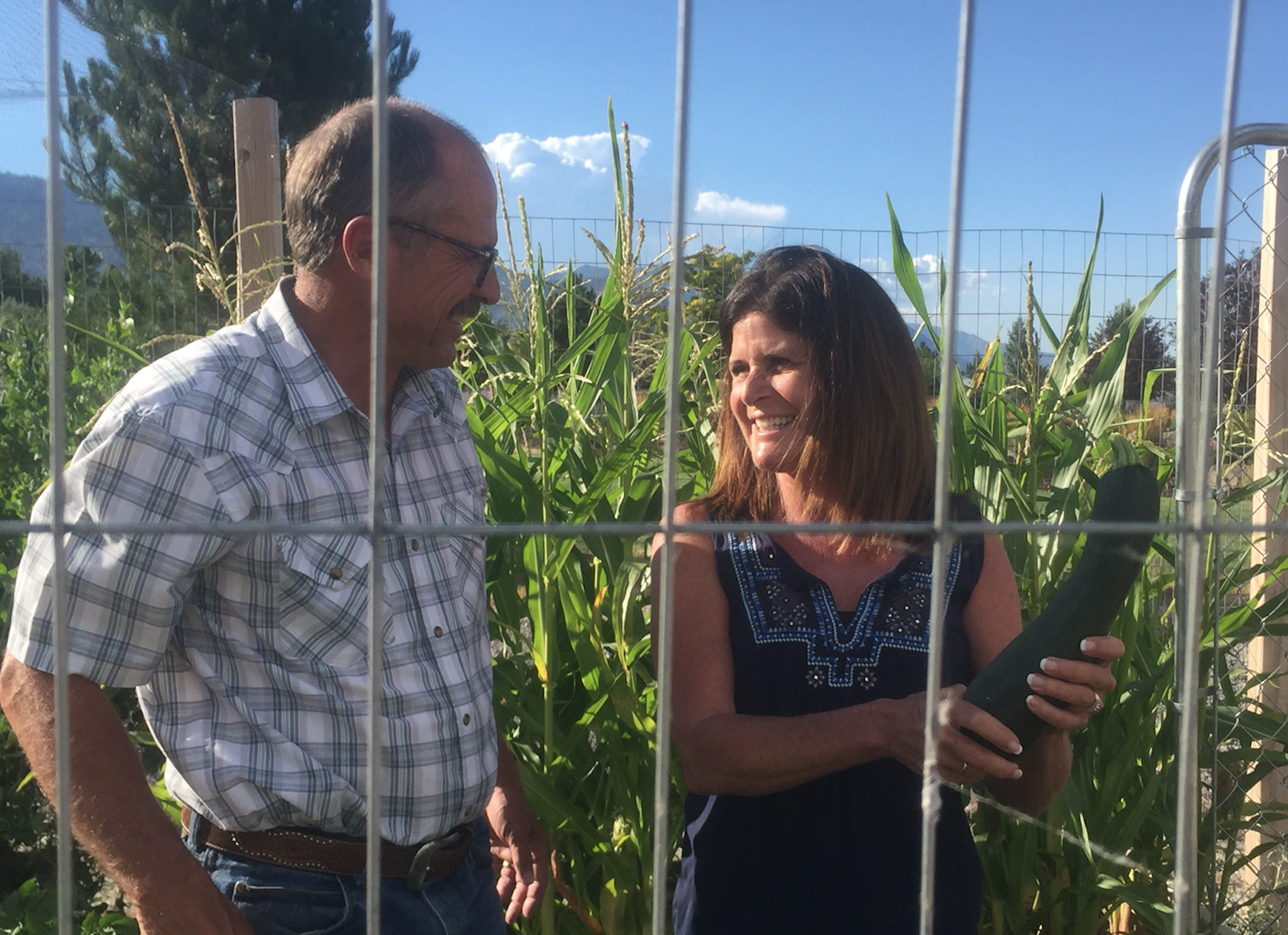

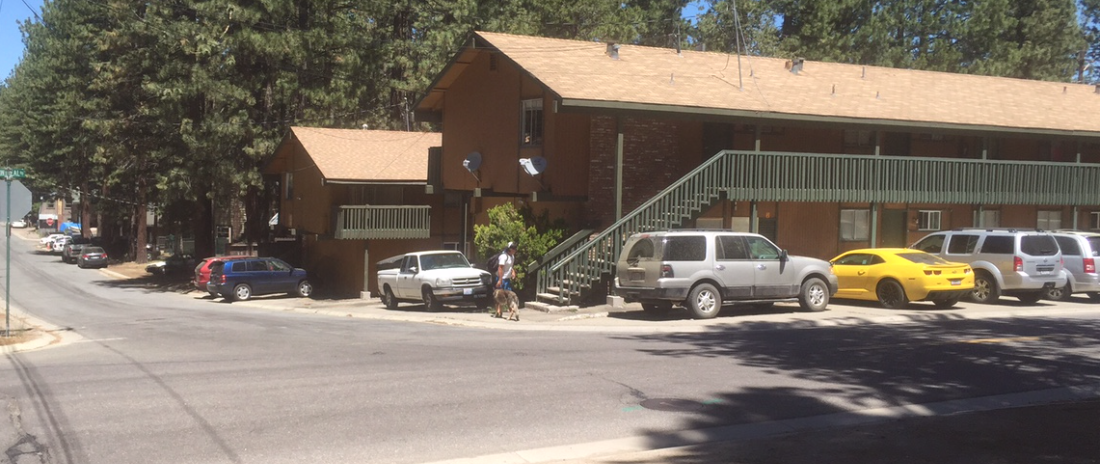
 “If you make less than $100,000 a year, housing is an issue around Lake Tahoe and Truckee.” — Katie Rice, senior loan officer at Guild Mortgage
“If you make less than $100,000 a year, housing is an issue around Lake Tahoe and Truckee.” — Katie Rice, senior loan officer at Guild Mortgage
